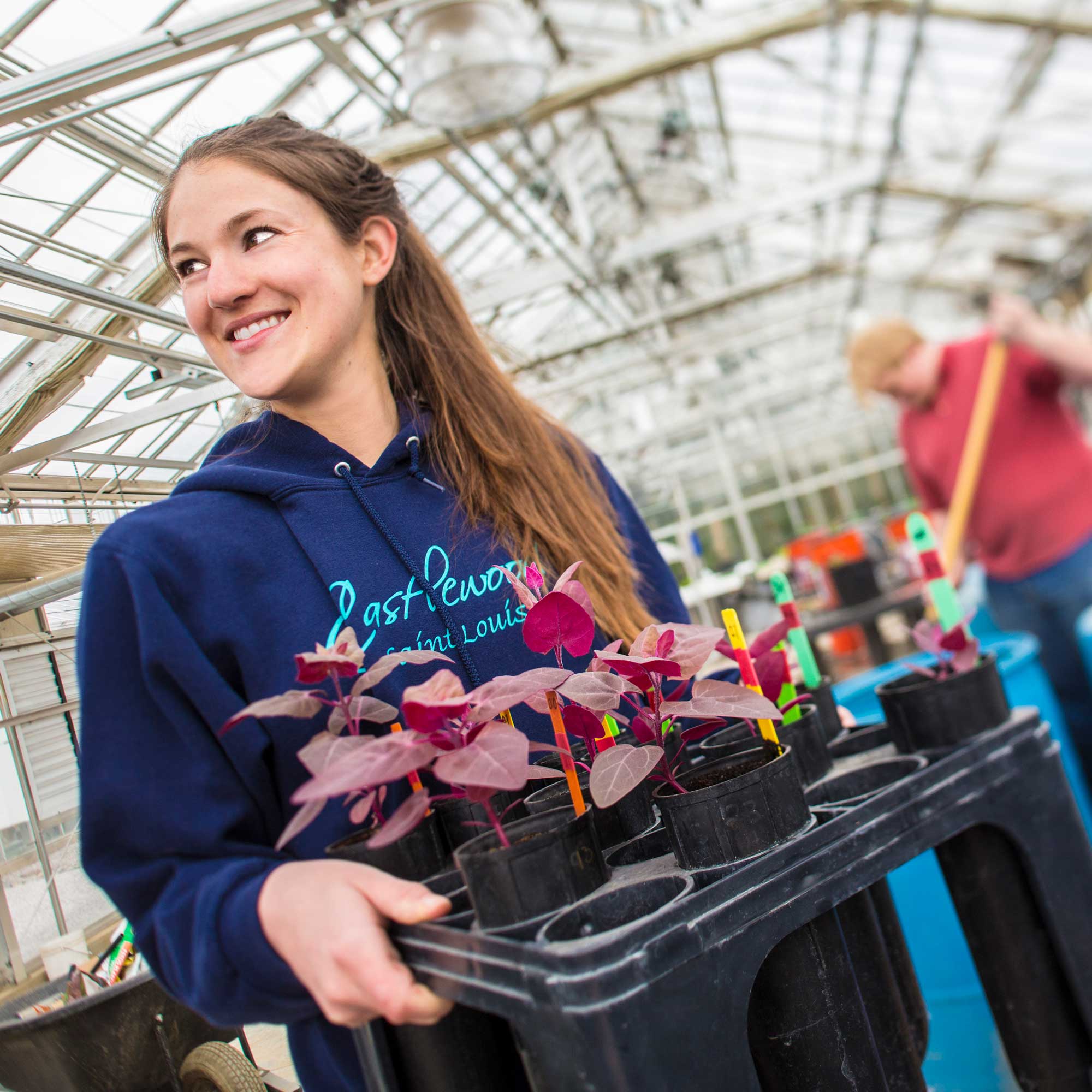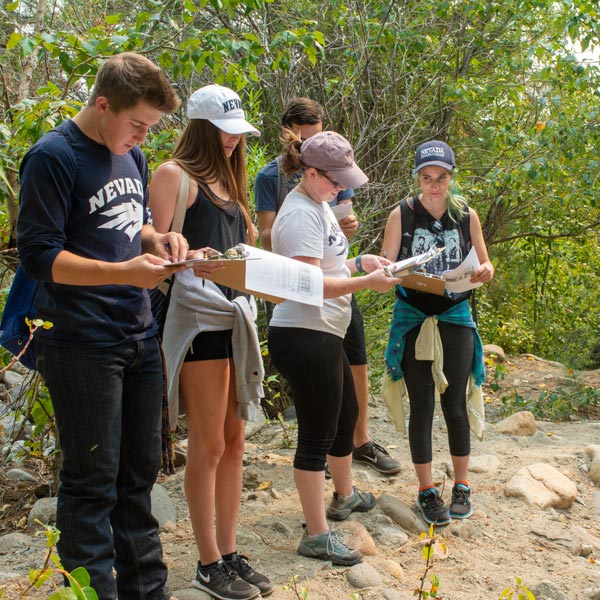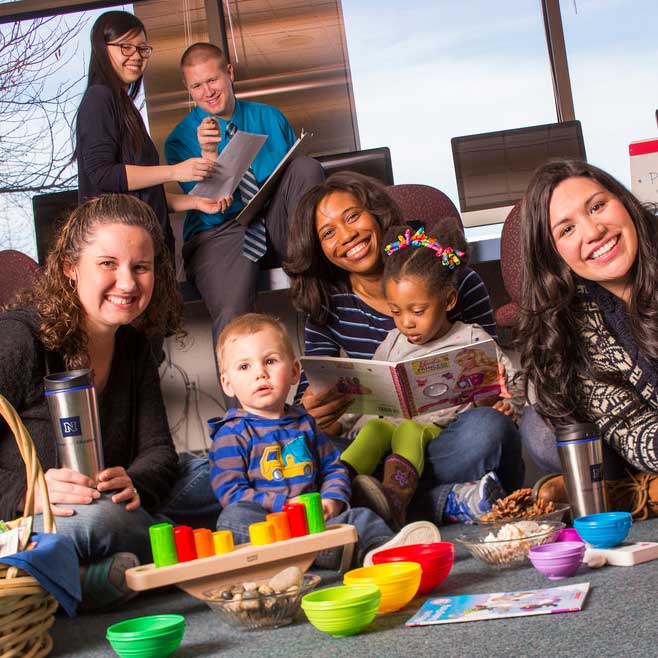In this edition
- Professors Gustin and Cushman elected as American Association for the Advancement of Science Fellows
- Study finds high stress levels in agriculture owners and managers, identifies paths to coping
- Extension offers new comprehensive training for early childhood educators
- Connecting habitat in the Central Valley could help save California’s pollinators
- Extension provides 4-H after-school program at Ralph Cadwallader Middle School
- March 28 – Giving Day: The Wolf Pack Way
- Just in: Fresh stock of wool Nevada Wolf Pack gear
About our College
A founding college of the University, we have a long tradition of excellence in teaching, research and engagement programs that benefit the health and economic vitality of Nevada. We offer programs in:
- agriculture, horticulture, rangeland and veterinary sciences
- biochemistry and molecular biology
- children, youth and families
- community and economic development
- health and nutrition
- natural resources and environmental science
Professors Gustin and Cushman elected as American Association for the Advancement of Science Fellows
AAAS Fellowship is one of the most distinguished honors in the scientific community internationally

Professors Mae Gustin (left) and John Cushman (right) in the College are part of the newly elected class of the American Association for the Advancement of Science Fellows. Photos by Robert Moore.
Professor Mae Gustin
Was awarded the honor for her distinguished contributions to the field of biogeochemistry, particularly for understanding the fate and transport of mercury in the environment. Gustin developed technologies that measure airborne mercury concentrations up to 80% more accurately.
"Mae’s research on atmospheric contaminants like mercury is important to the study and mitigation of air pollution worldwide," College Dean Bill Payne said.
Professor John Cushman
Was awarded the honor for his distinguished contributions to the field of plant science, particularly for his research on plant response to abiotic stresses, including salinity, drought and cold, and how to improve plant tolerance to these stresses.
"John’s efforts to increase tolerance of plants to challenging conditions have the potential to turn currently underutilized land into land that can be used to provide food and fuel for the world," College Dean Bill Payne said.
Advancing research internationally
“Mae and John are truly top-notch researchers, not just at this University or in this State, but internationally. I could think of no two professors more deserving of the prestigious Fellowship honor." – College Dean Bill Payne
Study finds high stress levels in agriculture owners and managers, identifies paths to coping
University now surveying frontline agriculture employees to understand, develop resources for all agriculture workers
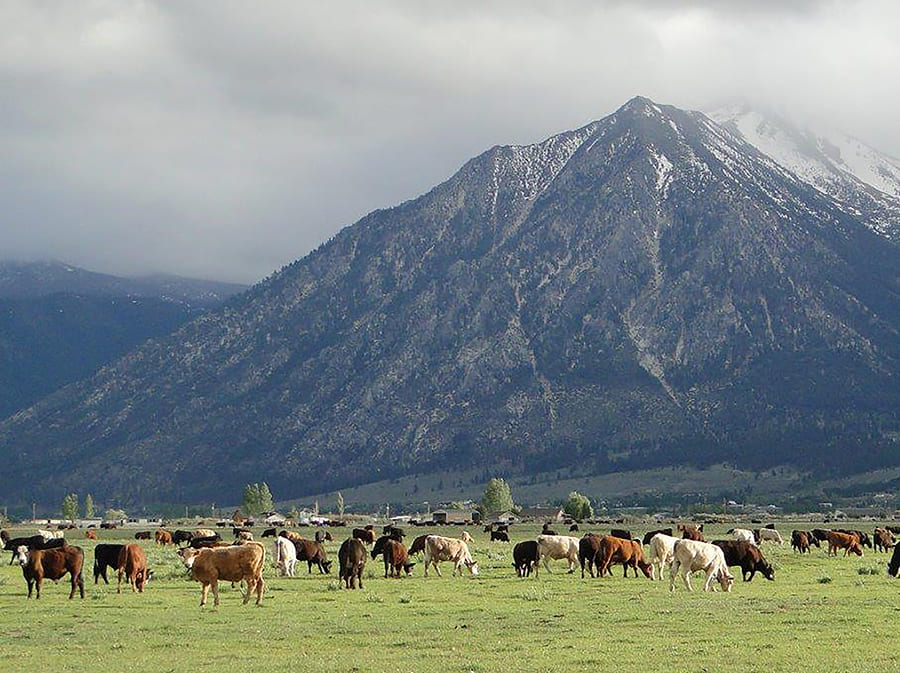
The University is surveying farm and ranch workers through March 31 to gauge stress and develop resources for stress management.
Farmers and ranchers are facing health issues related to stress at higher levels than the general population, according to a University study of farm or ranch owners or managers. The study, led by Extension Specialist Brenda Freeman and Educator Lindsay Chichester, is part of a larger effort through the Western Regional Farm and Ranch Stress Assistance Project.
As part of the project, the pair is now surveying farm and ranch workers. Results from both surveys will be used to create stress management resources. Chronic stress can be related to higher incidence of cardiovascular issues, high blood pressure, depression, substance abuse and suicide. Yet, producers often don’t have good “help-seeking skills,” Chichester said.
“We tend to be stoic, and not want to admit we need help,” she said. “Not even to ourselves.”
Top stressors for owners and managers:
- Production costs (84%)
- Legislative issues related to agriculture (78%)
- Workload (77.9 %)
- Family (77.9 %)
- Livestock disease and injury (75.7 %)
- Lack of time (75.3 %)
Understanding stressors to build resources
“We are in the second round of data collection now, which is to gather survey data from frontline workers, including migrant workers. We’re looking at stressors the workers experience such as housing, working conditions and food insecurity. We are trying to better understand the stressors, as well as topics of interest for stress management.” – Extension Specialist Brenda Freeman
Extension offers new comprehensive training for early childhood educators
‘Spiral Up’ provides a career pathway for child care professionals
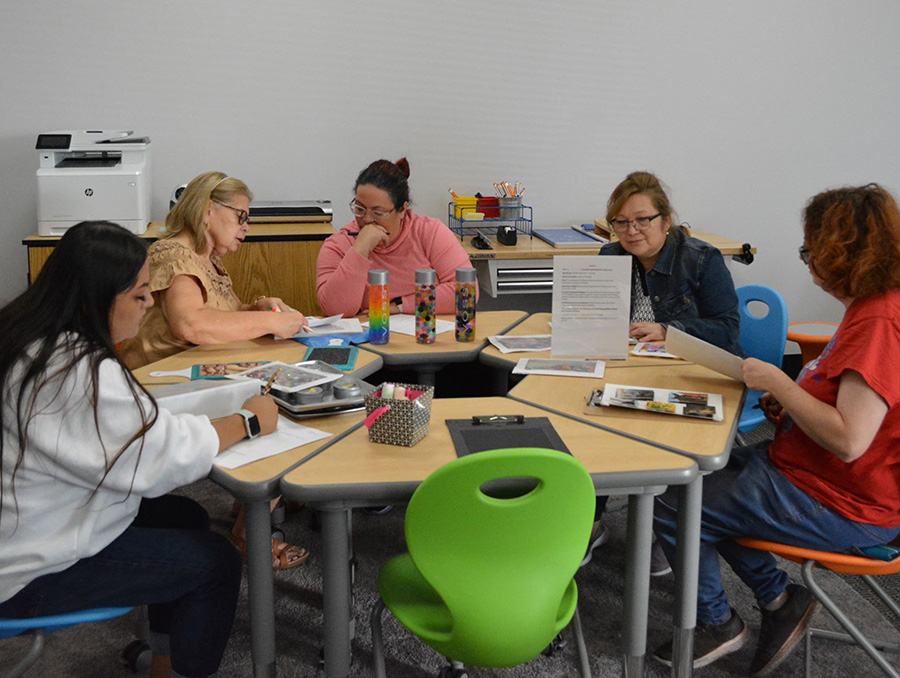
A group of child care educators work on their professional portfolio assignments in Extension’s new learning lab located in North Las Vegas. Photo by Cathy Peshlakai.
Extension recently introduced “Spiral Up,” a program designed to set new child care professionals up for success in providing high-quality care and education to the youngest population in the state. The seven-week program is offered at no cost, open to educators of children 0-5 years and delivered five times per year. It includes:
- All trainings new professionals are mandated to complete within 120 days of hire, except CPR and first aid.
- Individual coaching and additional training.
- Support for early childhood center directors.
“We’re combining education with support to help individuals as they begin their career,” Extension’s Cathy Peshlakai said. “We build relationships with new hires to help them feel like they are a part of a community.”
After initial training, Extension offers professionals:
- Continued training to meet annual requirements; earn the national Child Development Associate Credential, promotion and pay increases; and pursue higher education.
- Adult Learning Academy for Trainers, Leadership Professional Learning Community, and Coaching Circles and Community of Practice programs.
- A hands-on learning lab, where professionals receive coaching and learn more about creating engaging early childhood centers.
Fostering effective educators
“I have had four new employees go through Spiral Up Academy, and the support and resources they get is amazing. The instructors go above and beyond to help them complete all the initial training hours and give them the tools they need to be effective teachers.” - University United Methodist Child Development Center Director Chelsie Shurtleff
Connecting habitat in the Central Valley could help save California’s pollinators
University teams with Xerces Society in study of agricultural fields, urban interface
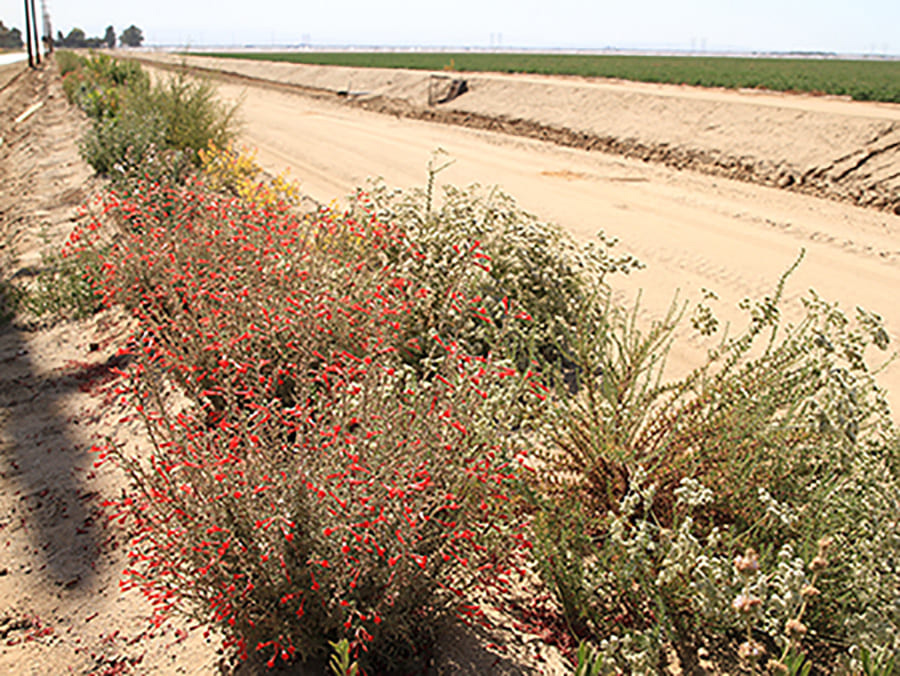
Native plants on a farm’s border provide habitat for pollinators in California’s San Joaquin Valley. Photo by Cameron Newell, Xerces Society.
A study published in the science journal PLoSOne finds that planting the margins of agricultural fields with pollinator-friendly plants and minimizing pesticide use in the Central Valley of California could help pollinators there to survive. Pollinators, vital for food production, are rapidly declining, often most severely in agricultural areas.
“Insects populations and the pollinating services that they provide are decreasing at alarming rates across the globe,” the study’s lead author Tom Dilts, a research scientist in the College, said.
The Central Valley produces 25% of the country’s food and 40% of its fruits and nuts. The value of pollination services from wild pollinators to California agriculture is up to $2.4 billion per year.
Dilts collaborated with the University's College of Science and the Xerces Society on the study. The team developed a tool for modeling landscape connectivity for insects that uses land-use information, lethality of pesticides and expert opinion on insect movement.
“We looked at three different agricultural margin scenarios combined with three different pesticide use scenarios,” Dilts said, “We found that agricultural margins have the potential to greatly enhance habitat connectivity for pollinating insects.”
They also found that reducing pesticide loads can further increase connectivity for pollinators.
Farmers who plant hedgerows at their field edges see more benefits than just returning pollinators. The field borders can also attract pest-controlling insects, provide habitat for birds and other wildlife, and minimize soil erosion. USDA offers programs that allow farmers a quicker return on investment for habitat planting.
Protecting pollinators and our food supply
“Restoring habitat connectivity to provide for pollinating insects is critical for preventing biodiversity collapse, providing natural pollination services and preventing extinction. This modeling shows that if we maximize field edge plantings with diverse native plants and minimize pesticide use, we can both improve pollinator survival and protect our future crops and food supply.” - Xerces Society Executive Director Scott Black
Extension provides 4-H after-school program at Ralph Cadwallader Middle School
Students receive free opportunities for enrichment when the school day ends
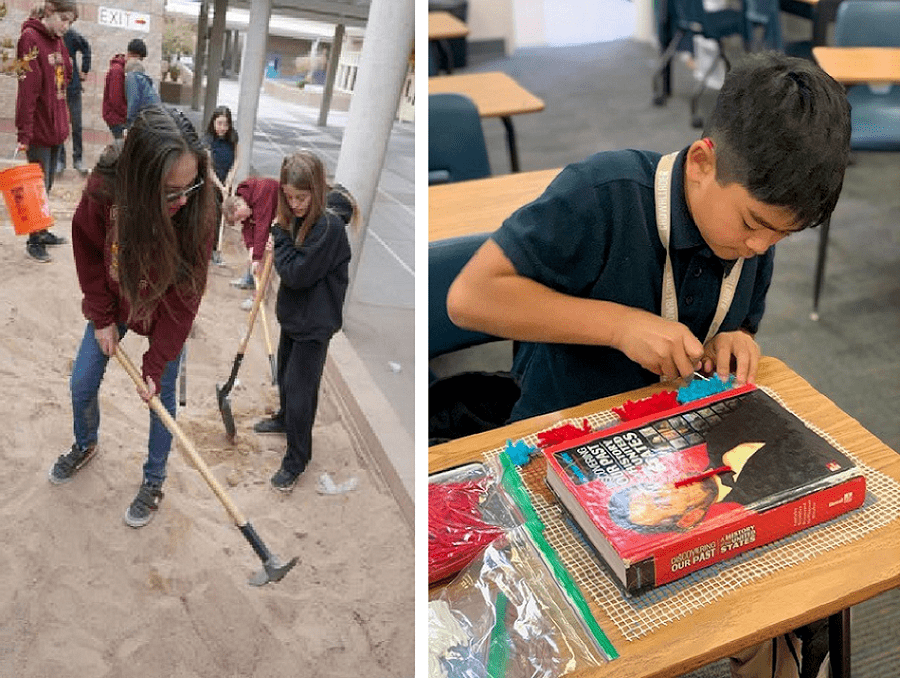
Students work on clearing the tortoise habitat. Right: A student works on his latch hook rug. Photos by Molly Malloy.
What do theater and filmmaking, ceramics, a desert tortoise habit, 3-D printing, gardening, and latch hook have in common? They are just some of the projects that students can participate in as part of the after-school club that Extension’s 4-H Program recently established at Ralph Cadwallader Middle School in Las Vegas. By joining the club, students are finding the opportunity to be engaged when school ends.
Extension offers 4-H after-school programming throughout the state. The 4-H team and Cadwallader Middle School explored the types of programming to offer there. The school assessed student and teacher interests and teacher skill sets. Extension 4-H worked with the school to:
- Provide funding, training and daily support for teachers.
- Coordinate the club and establish nine club projects.
- Provide resources for the club’s projects.
The 4-H after-school program at Cadwallader began Jan. 17 with 10 4-H instructors and 120 students. One project with high participation has students constructing a habitat for a rescue tortoise.
“I thought it would be cool to build a legacy project,” Travis Wagley, Cadwallader math teacher and 4-H instructor, said.
With Wagley’s supervision, students have gained experience reading landscape plans, cutting and drilling wood and pipes, installing irrigation, and writing letters to request donations of materials.
Building successful students
“4-H flips traditional roles, and kids get to be in charge of their own learning while having fun. The ultimate goal is that they learn skills to be successful in school and life. So, while they’re making ceramics or building a tortoise habitat, they’re learning communication, teamwork, time management and conflict resolution.” - Extension 4-H Coordinator Yolys Carrera
March 28 – Giving Day: The Wolf Pack Way
Show everyone “The strength of the Pack is the Wolf, and the strength of the Wolf is the Pack!”
University Advancement
On Tuesday, March 28, University of Nevada, Reno Foundation and University Advancement are asking everyone to back the Pack for Giving Day: The Wolf Pack Way. By bringing The Wolf Pack Family together for this 24-hour online giving day, you can help provide vital funds campus wide.
University President Brian Sandoval said, “I’m asking the entire Wolf Pack Family to join me in donating to our beloved University. Let’s show everyone ‘the strength of the Pack is the Wolf, and the strength of the Wolf is the Pack!’”
Join and donate where it matters most to you: from areas of greatest need, to student scholarships, Wolf Pack Athletics, or your favorite school or college. After you donate, please share your reason for giving on social media using #PackGivesBack to encourage your friends, family and colleagues to do the same.
Your support makes a difference in the lives of our University’s nearly 21,000 students. Thanks to donor-funded scholarships, students such as Troy Uemura can work to achieve their dreams while helping to improve the future of Nevada and the world.
Giving Nevada a better future
“As a first-generation and low-income student, the finances of attending university was one of, if not the most important consideration in my decision to attend. My ultimate ambition is to work with an aerospace company like NASA or SpaceX. I greatly appreciate your willingness to support me and the future of Nevada as a whole.” - Troy Uemura
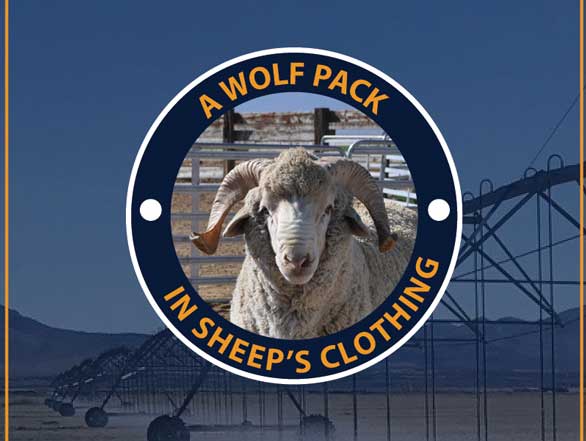
Just in: Fresh stock of wool Nevada Wolf Pack gear
Shop the Nevada Wolf Shop today for fresh stock from the first-ever run of beanies, scarves, hoodies, blankets and more made from our College's Rafter 7 sheep — some of the finest and softest wool in the nation.
Proudly wear your new gear knowing your Silver and Blue purchase supports University students and Nevada agriculture. Prices range from $24 to $300.
Innovating for Nevada
Our programs work together to make an impact
Our teaching, research and engagement programs are intertwined and complement one another. Faculty who teach on campus also conduct research as part of our Experiment Station, allowing students to learn about and participate in research. Extension faculty engaging with communities identify research needs, as well as join Experiment Station faculty to conduct research. Faculty on campus help to develop Extension programs in communities.
